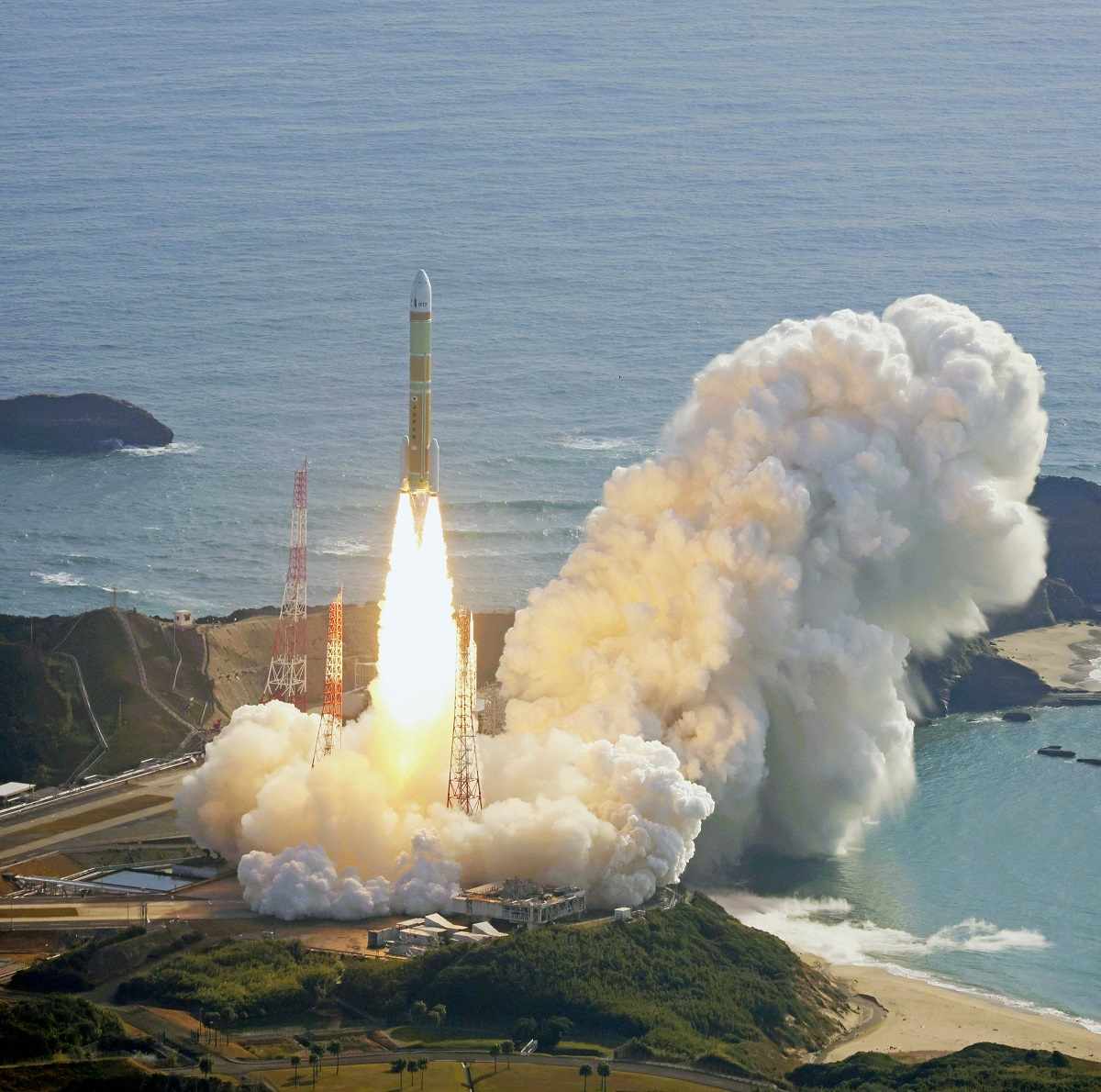Japan’s H3 Rocket Successfully Launched, Reaches Orbit; Previous H3 Launch Attempt Failed Due to Electrical Issue

The H3 rocket heads off into the sky.
17:20 JST, February 17, 2024
Japan’s new mainstay H3 rocket lifted off at 9:22 a.m. on Saturday from the Tanegashima Space Center in Kagoshima Prefecture. The rocket successfully reached the planned orbit, the Japan Aerospace Exploration Agency said.
The H3 rocket is Japan’s next flagship rocket that is expected to play a key role in the nation’s space business and exploration in the future. By putting the rocket into practical use, Japan aims to fully participate in the increasingly intense international competition for space exploration.
According to JAXA, the second H3 rocket reached its intended trajectory and the rocket’s second-stage engine successfully ignited about five minutes after launch. In the launch of the first H3 rocket in March 2023, the second-stage engine failed to ignite.
About 16 minutes later, the rocket reached the target altitude for the release of one of the satellites it was carrying. The release of a dummy satellite plus two microsatellites was later confirmed.
Joint development of the H3 rocket was begun by JAXA and Mitsubishi Heavy Industries, Ltd., in 2014, aiming to make it a successor to the current mainstay H2A rocket.
However, the rocket development faced difficulties and the launch of the first H3 rocket was postponed twice. When the first H3 rocket was launched in March last year, it had to be deliberately destroyed after the vehicle’s second-stage engine failed to ignite due to excessive current generated in the engine’s electrical system. The advanced land observing satellite Daichi-3, which was onboard, was also lost. JAXA has looked into the causes and factors of the failure and taken measures for the ignition of the second-stage engine and other parts to prepare for the second trial of the H3 rocket Saturday.
The second H3 rocket measures 57 meters in length and 5.2 meters in diameter. This time, the rocket did not carry important government satellites in consideration of the risk of failure. On the other hand, the rocket carried the two microsatellites and a dummy satellite approximating the weight of the Daichi-3. With these, JAXA tested the vehicle’s launch performance.
"Science & Nature" POPULAR ARTICLE
-

Genome Study Reveals Milestone in History of Cat Domestication
-

Big Leap in Quest to Get to Bottom of Climate Ice Mystery
-

Security Camera Footage Vulnerable to Outside Access; Investigation Finds 3,000 Pieces Exposed Online
-

Paws on Parade: Nairobi’s Dogs Dazzle at ‘Pawchella’
-

Japan Set to Participate in EU’s R&D Framework, Aims to Boost Cooperation in Tech, Energy
JN ACCESS RANKING
-

Keidanren Chairman Yoshinobu Tsutsui Visits Kashiwazaki-Kariwa Nuclear Power Plant; Inspects New Emergency Safety System
-

Tokyo Economic Security Forum to Hold Inaugural Meeting Amid Tense Global Environment
-

Imports of Rare Earths from China Facing Delays, May Be Caused by Deterioration of Japan-China Relations
-

University of Tokyo Professor Discusses Japanese Economic Security in Interview Ahead of Forum
-

Japan Pulls out of Vietnam Nuclear Project, Complicating Hanoi’s Power Plans






















